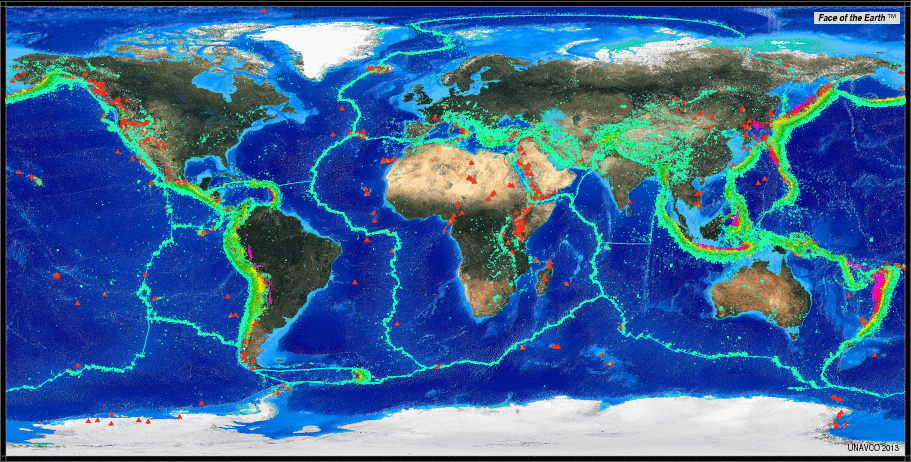The tectonic plates (shown in Figure 1) are moving. What happens where tectonic plates meet? The plates don't move past each other smoothly. They grind past each other, often resulting in earthquakes. Also, this is where much of the deformation occurs. There are three types of plate boundaries (Figure 2). The relative motion of the adjacent plates determines the type of plate boundary:
Transform boundary: When plates are moving past each other horizontally, they form transform faults like the San Andreas fault in California.
Convergent boundary: When plates move towards each other, they either form mountains like the Himalaya, in Asia, or volcanoes like the Cascades in North America. Whether we get high mountain ranges or volcanoes depends on the crust involved. If continental crust collides, we get mountains. If oceanic crust is involved, the oceanic crust dives down into the mantle and forms volcanoes. This is called a subduction zone.
Divergent boundary: If the two plates are moving away from each other, a rift is formed. Magma rises into this rift, erupting and forming new crust.
See animations of what happens at plate boundaries.

Last modified: 2019-12-26 16:24:59 America/Denver


Please send comments and corrections to education unavco.org.
unavco.org.
Copyright © 2012 - 2026 UNAVCO and the GPS Reflections Research Group.
All Rights Reserved.